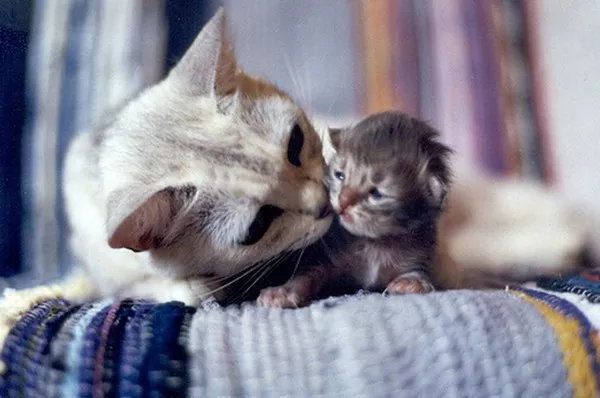Bottle-feeding two-week-old kittens can be an incredibly rewarding and fulfilling experience. Whether you have rescued orphaned kittens or are assisting a mother cat in caring for a large litter, providing proper nutrition and care is essential for their survival and well-being. In this article, we will delve into the step-by-step process of bottle-feeding two-week-old kittens, discussing the necessary supplies, feeding schedule, and tips for ensuring their healthy development.
Gather the Necessary Supplies:
Before you begin bottle-feeding, ensure that you have all the essential supplies on hand. These include:
- Kitten-specific milk replacement formula: Purchase a high-quality milk replacement formula specifically designed for kittens. Avoid using cow’s milk as it lacks the necessary nutrients and can cause digestive upset.
- Sterilized bottles and nipples: Use small, sterilized bottles with appropriately sized nipples designed for kittens. Sterilization is crucial to prevent the risk of bacterial infections.
- Warm water and a clean cloth: Keep warm water nearby for cleaning bottles and nipples between feedings. A clean cloth or paper towel will come in handy for wiping the kittens’ faces after feeding.
- Digital kitchen scale: A digital kitchen scale allows you to monitor the kittens’ weight gain accurately, ensuring they are thriving.
Preparing the Formula:
Follow the instructions on the milk replacement formula packaging to prepare the formula. It is important to use the correct ratio of formula to water and ensure the mixture is at the appropriate temperature, usually around 100°F (38°C). Test the temperature by placing a few drops on the inside of your wrist to avoid scalding the delicate mouths of the kittens.
Feeding Technique:
Hold the kitten gently but securely, ensuring they are comfortable and supported. Tilt the bottle slightly to allow the formula to fill the nipple without air bubbles. Place the nipple against the kitten’s lips, allowing them to latch onto it naturally. Monitor their feeding rhythm and adjust the angle of the bottle as necessary to prevent them from ingesting excess air. It is essential to be patient and allow the kittens to feed at their own pace.
Feeding Schedule:
Two-week-old kittens typically require feeding every 2-3 hours, including throughout the night. Follow a consistent feeding schedule to ensure they receive the necessary nutrition and energy for their rapid growth. As they grow older, the frequency of feedings can gradually decrease. Consult with a veterinarian for specific guidance on feeding intervals based on the kittens’ weight, health, and development.
Stimulating Elimination:
After each feeding, it is important to stimulate the kittens’ elimination. Use a soft, damp cloth or cotton ball moistened with warm water to gently massage their genital area. This mimics the mother cat’s tongue and helps facilitate urination and bowel movements. Be patient, as it may take a few minutes for them to eliminate.
Monitoring and Weighing:
Regularly monitor the kittens’ weight to ensure they are gaining appropriately. Weigh them daily on a digital kitchen scale and keep a record of their progress. Adequate weight gain indicates that they are receiving enough nourishment and thriving.
Providing Comfort and Security:
Kittens at this tender age require warmth, comfort, and security. Ensure they have a warm, cozy nesting area with soft bedding and a heat source to maintain their body temperature. A heating pad set on low, wrapped in a towel, can be placed near one side of the nesting area, allowing the kittens to move closer or farther away as needed.
Gradual Introduction to Solid Food:
Around three to four weeks of age, you can gradually introduce moistened kitten food or a specialized kitten formula to encourage the transition to solid food. Consult with a veterinarian for appropriate timing and recommendations on introducing solid food into their diet.
Conclusion:
Bottle-feeding two-week-old kittens requires dedication, patience, and attention to detail. By following the proper feeding technique, establishing a consistent schedule, and providing a warm and nurturing environment, you can help these tiny lives thrive and grow into healthy, happy cats. Remember, each kitten is unique, so be sure to consult with a veterinarian for personalized guidance and support throughout the bottle-feeding journey. Your dedication and love will make a significant difference in their lives, setting them on a path to a bright and fulfilling future.
Recommended reading:

























